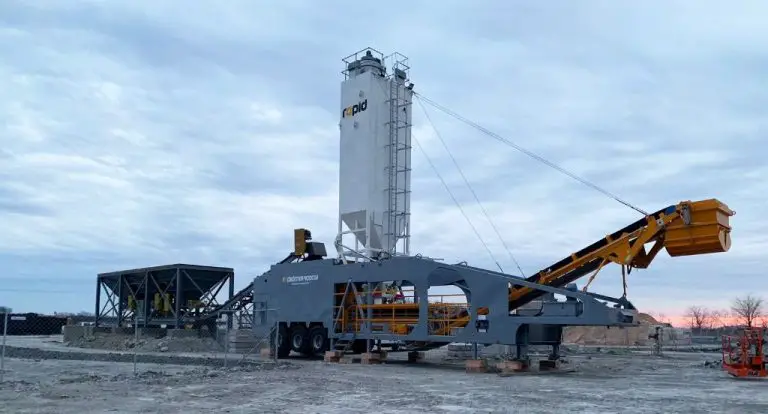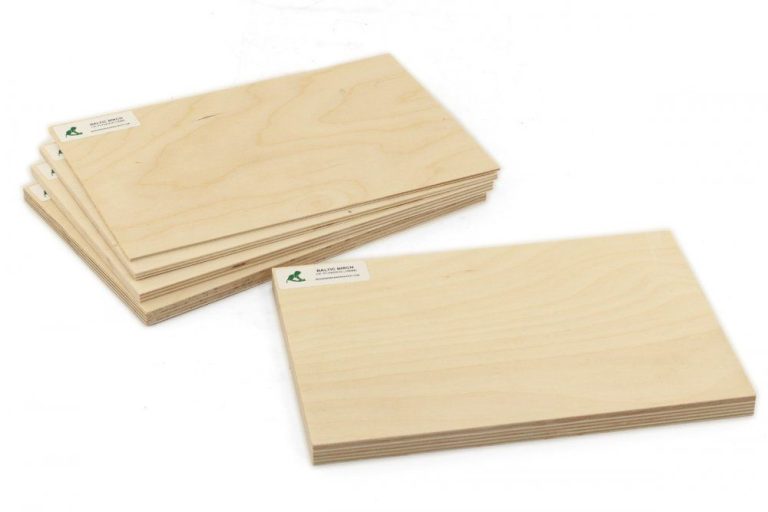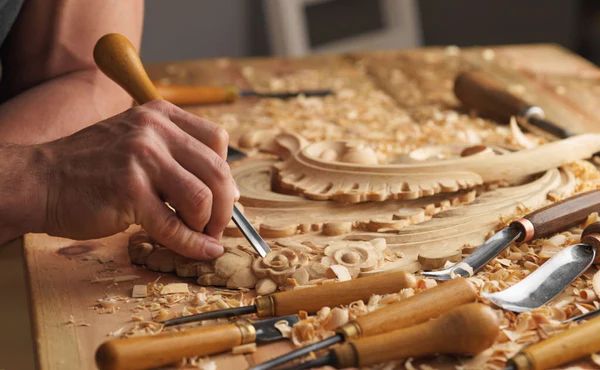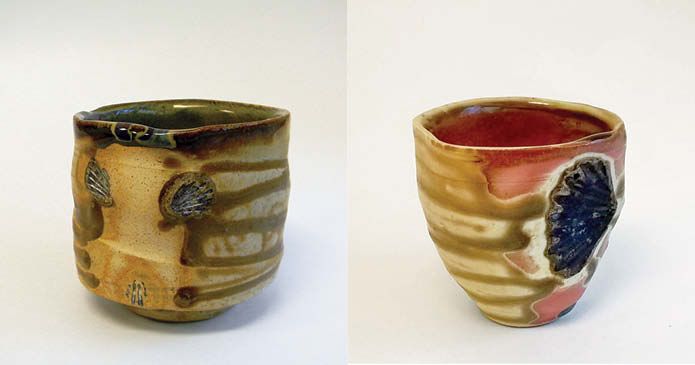What Is The Difference Between Studio Pottery And Production Pottery?
Studio pottery and production pottery are two main approaches in manufacturing ceramic ware like vases, bowls, and mugs. Studio pottery refers to pottery created by individual artists or artisans, working alone or in small groups. They focus on producing unique, handcrafted designs and limited quantities. Production pottery on the other hand represents mass-manufactured ceramic ware. It is made using molds, casting, and machinery in commercial plants to produce high volumes of identical pieces for large-scale distribution.
While studio pottery emphasizes artistic expression, originality, and craftsmanship, production pottery focuses more on efficiency, consistency, and affordability. This article will explore key differences between these two pottery types in areas like creation process, design, pricing, and more.
History
The origins of studio pottery can be traced back to the Arts and Crafts movement in the late 19th century. Pioneers like Bernard Leach sought to revive handcrafted ceramics and position pottery as a fine art rather than a commodity. Leach established his pottery studio in St Ives, England in 1920, producing functional stoneware inspired by ancient Chinese and Japanese pottery traditions. His book “A Potter’s Book” published in 1940 cemented Leach’s influence on studio pottery worldwide. The emphasis was on handmade craftsmanship and simple, elegant forms rather than mass production. Other seminal figures in the British studio pottery movement include Michael Cardew, Hans Coper, and Lucie Rie who helped shape studio pottery in the mid 20th century.
Creation Process
The key difference in creation process between studio pottery and production pottery is that studio pottery is handmade, while production pottery is mass-produced. Studio potters create their wares entirely by hand, from shaping the clay on a wheel or handbuilding, to decorating and glazing each piece. This hands-on process allows studio potters to have full creative control and make each piece unique (cite: https://www.youtube.com/watch?v=GTQSkvWqwx8).
In contrast, production pottery utilizes molds and automation to efficiently produce multiples of the same design. The production process may involve clay extruders, jiggering machines, and assembly line workflows to maximize output. While studio potters make a limited number of pieces, production pottery aims for volume and consistency (cite: https://en.wikipedia.org/wiki/Studio_pottery).
The handmade approach focuses on quality and individuality, while the mass-production approach focuses on efficiency and affordability. Both methods have their artistic merits and meet different needs in the ceramic market.
Scale
Studio potters usually produce pottery on a limited, small-scale while production potters make pottery in larger volumes and quantities. According to discussions on Reddit and forums, studio potters may produce 10-50 pieces per week on average while production potters can make 100+ pieces per day (Source). The limitations on scale for studio potters relates to their handcrafted methods which are labor and time-intensive compared to the mechanized processes of production pottery.
Studio pottery involves making pieces one at a time by hand with techniques like throwing on a wheel or handbuilding. This limits the volume they can produce. Production pottery utilizes industrial techniques like slipcasting or jiggering which allows them to mass produce identical pieces much more quickly at scale. During the industrial revolution, pottery studios transitioned to mass production methods to drastically increase volumes (Source).
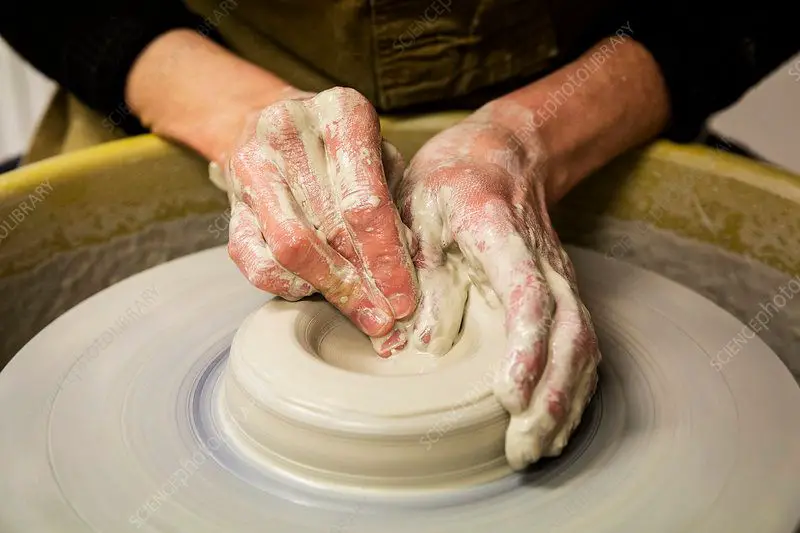
So while studio potters focus on quality and uniqueness in lower quantities, production potters prioritize efficiency, consistency and high volumes in manufacturing. The scale and volumes reflect the different purposes and processes involved in studio versus production pottery.
Design
Studio pottery emphasizes unique, artistic designs that showcase the creativity and skill of each individual potter. Potters hand-make each piece from scratch, allowing freedom of expression in the shape, decorative style, glazing, and finishing techniques (Pottery: a philosophy of the elements, 2023). In contrast, production pottery relies on repetitive, formulaic designs created for mass manufacturing. Factories use molds and assembly lines to rapidly produce multiple identical pieces. While studio pottery celebrates the variation between one-of-a-kind works, production pottery aims for consistency and conformity across its products.
Function
Studio pottery is made with an artistic focus, allowing potters creative freedom to experiment and express themselves through their work. The functional aspect of the pieces comes second to artistic experimentation. Studio potters prioritize creativity, uniqueness, and artistic vision over practical use.
In contrast, production pottery emphasizes the practical, functional purpose of the ceramic pieces first and foremost. Production pottery studios mass produce items like tableware, kitchenware, and home decor pieces that serve a specific practical function in daily life. While still utilizing creative skills, production potters work within the constraints of commercial viability and wide consumer appeal.
Citing the article Defining Terms, studio pottery explores artistic possibilities and personal expression through clay work, while production pottery focuses on meeting consumer demand for functional ware.
Materials
Studio potters typically use higher quality clays and glazes compared to production pottery. According to Craft Smart (https://www.soulceramics.com/pages/types-of-clay), common clay types for studio potters include stoneware, porcelain, and earthenware. These allow for more diversity in firing temperatures, textures, and looks. Studio potters may also mix their own clays and glazes by hand to achieve very specific results.
In contrast, production potteries often rely on cheaper standardized clays and glazes for efficiency and cost savings. As Lakeside Pottery (https://www.lakesidepottery.com/Pages/Pottery-tips/choosing-the-right-clay-type.htm) explains, production studios tend to use a limited selection like red earthenware, stoneware, and porcelain. The quality is lower but still functional for mass-produced items. So studio potters emphasize artistry and customization, while production potters prioritize affordability and standardization.
Techniques
The techniques used in studio pottery versus production pottery differ significantly. Studio pottery relies on handcrafted methods that allow artists to have full control and creative freedom over the entire process. This hands-on approach leads to each piece being completely unique. In contrast, production pottery utilizes automation, molds, and assembly-line techniques to produce uniform pieces in large quantities.
Studio potters focus on creating one-of-a-kind works using techniques like handbuilding, wheel throwing, and surface decoration. These manual methods allow the artist to respond intuitively to the clay, producing subtle variations in each piece. Production potters automate repetitive tasks like shaping, glazing, and decorating to efficiently produce multiple identical copies. While studio pottery celebrates the handmade, production pottery relies on technology to maximize consistency and output.
The handcrafted approach of studio ceramics results in fewer pieces that exhibit the personal touch of the artist. Production pottery sacrifices this individuality to mass produce ware using mechanization and division of labor. The human involvement is diminished. Ultimately, the techniques distinguish studio pottery as painstakingly handmade art versus the efficiencies of mass production.
Pricing
There is a significant difference in pricing between studio pottery and production pottery due to the costs associated with small-batch versus mass production. Studio potters producing one-of-a-kind or limited edition pieces incur higher costs for materials, studio expenses, and time spent on each individual item, leading to higher retail prices (Community.ceramicartsdaily.org, 2022). In contrast, production potters can take advantage of economies of scale, producing a high volume of identical pieces to maximize efficiency and minimize per-unit costs. This allows them to sell at lower price points while still maintaining profit margins (Expertclay.com, 2016).
For specialty studio pottery, pricing is typically calculated starting with a base price per pound of clay, often $10-$15. From that baseline, the artist factors in intricacy of design, specialized techniques, glazes, reputation, and market demand to reach the final asking price. A basic soup bowl may start at $30 while a ornate sculptural piece might sell for hundreds. On the other hand, mass-produced pottery has automated molding, glazing, and firing so that each piece costs just pennies to make. Manufacturers can profitably sell mugs for under $10 and dinner sets for under $50 (Ceramicartsnetwork.org, 2019).
The customer profiles also differ. Studio pottery attracts collectors and those appreciating the uniqueness of handcrafted artworks. Production pottery customers simply require functional, affordable options. So studio potters can typically demand higher pricing due to exclusivity and craftsmanship, while production potters aim for maximum cost efficiency and broad consumer appeal.
Conclusion
In summary, there are some key differences between studio pottery and production pottery. Studio pottery is made by individual artists, usually in small quantities, with a focus on unique designs and artistic experimentation. It is handcrafted and uses traditional techniques like throwing on a wheel or handbuilding. Studio potters have the flexibility to explore their own creative vision and aesthetic.
In contrast, production pottery is made by companies in large quantities for mass distribution. It focuses on functionality, reproducibility, and efficiency. Production pottery uses industrial techniques like molding and mechanical assembly lines. The priority is on maximizing output and minimizing costs, rather than individual creativity. While studio pottery is viewed as an art form, production pottery is seen as more of a commodity or consumer good. Though both make pottery items, their scale, approach, and end goals differ significantly.



